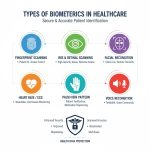Bioplastics Market Accelerates Towards Sustainable Future
The global Bioplastics Market is witnessing unprecedented momentum, propelled by mounting environmental concerns and regulatory pressure against conventional plastics. With markets globally moving toward eco-friendly materials, bioplastics—derived from renewable biomass sources—are rapidly gaining traction across packaging, consumer goods, agriculture, automotive, textiles, and construction segments. Demand surges as governments clamp down on single-use plastics and consumers embrace sustainable alternatives. From product innovations to expanding manufacturing capacities, bioplastics are redefining the plastics value chain and reshaping industries worldwide.
Key Takeaways
- Global bioplastics market valued at USD 7.41 billion in 2024, and projected to reach USD 127.55 billion by 2035, at a CAGR of 29.55%.Largest Region: Europe
- Asia Pacific expected to register the fastest growth, supported by industrialization and favorable policies.
- PLA (Polylactic Acid) leads product segments; PHA, PBAT, and starch-based bioplastics gaining traction.
- Major applications include packaging, agriculture, textiles, consumer goods, with growing use in automotive and construction.
- Growth driven by regulatory support, sustainability awareness, and demand for biodegradable alternatives.
- Challenges include high production costs, limited recycling infrastructure, and feedstock constraints.
- Opportunities lie in circular economy initiatives, innovative biodegradable polymers, and emerging market penetration.
Our comprehensive Bioplastics Market report is ready with the latest trends, growth opportunities, and strategic analysis. View Sample Report PDF.
Premium Insights
Bioplastics are increasingly embraced due to their biodegradability, lower carbon footprint, and renewable feedstocks. Strong regulation—particularly in Europe—and shifting consumer preferences support the adoption of bioplastic packaging and disposable items. Technological progress is enabling novel biopolymer formulations with enhanced performance, further solidifying their role in multiple industries.
According to Vantage Market Research, Global valuation at USD 7.41 billion in 2024, with projections anticipating a rise to USD 127.55 billion by 2035, reflecting a robust CAGR of 29.55% during 2025–2035. This growth underscores transformative industry dynamics and an accelerating shift towards sustainable materials.
The bioplastics market remains fragmented, with numerous players driving innovation and expanding production. Major contributors include NatureWorks, Total Corbion, Avantium, Teijin, Toray, Toyota Tsusho, and PTT MCC Biochem—each investing in R&D and partnerships to boost scale, diversify feedstocks, and meet varied application needs. Competition centers on biodegradability, feedstock sustainability, polymer performance, and end-use adaptation.
For Bioplastics Market Research Report and updates detailed: View Full Report Now!
By Product Insights
The bioplastics market is divided into biodegradable and non-biodegradable polymers. Biodegradables include PLA, PBAT, PBS, starch blends, and other compostable plastics, widely used for packaging, agriculture, and disposable consumer goods due to eco-friendly properties. Non-biodegradables such as bio-PE, bio-PET, polyamide, and PTT provide durability and recyclability for long-life applications. Product selection depends on application needs, performance requirements, sustainability goals, and regulatory compliance.
By Applications Insights
Bioplastics serve diverse applications, including packaging (rigid and flexible), consumer goods, agriculture, automotive, textiles, building & construction, and other industrial uses. Packaging is the largest segment due to food, beverage, and retail demand. Agricultural films, automotive components, and textile fibers benefit from lightweight, biodegradable alternatives. Adoption is driven by environmental regulations, consumer awareness, and the push for sustainable materials across industries.
Regional Insights
North America in Bioplastics Market Trends
North America is seeing steady bioplastics demand led by sustainability mandates, corporate ESG policies, and growing consumer eco-awareness. Key industries include food packaging and agricultural films. Regulatory efforts—both federal and state-level—are increasing barriers for single-use plastics, pushing adoption of PLA and PHA. Canada and Mexico also display notable uptake in packaging and compostable goods, underpinned by expanding bio-based innovation ecosystems.
Europe in Bioplastics Market Trends
Europe stands as the largest regional market for bioplastics, aided by stringent environmental policies, recycling mandates, and the EU’s Plastic Directive. Compostable plastics in packaging and agricultural films are popular, with countries like Germany, France, and the Netherlands driving demand. The strong regulatory frameworks and supportive consumer sentiment accelerate adoption of biodegradable polymers and advanced recycling systems.
Asia Pacific in Bioplastics Market Trends
Asia Pacific is the fastest-growing bioplastics region, with rapid industrialization, large-scale packaging needs, and rising environmental regulations. China, India, Japan, and Southeast Asia are ramping up bioplastic production for packaging, agriculture, and consumer goods. Expansion of PLA and starch-based bioplastics is supported by cost-effective feedstocks, favorable policies, and growing composting infrastructure.
Latin America in Bioplastics Market Trends
Latin America’s bioplastics market is emerging gradually, with Brazil, Mexico, and Argentina leading. Demand is driven by packaging in food and agriculture, supported by rising sustainability awareness and eco-friendly mandates. Local production remains modest, with emphasis on imported innovations and pilot projects. Government initiatives promoting biodegradable materials are fostering future growth.
Middle East & Africa in Bioplastics Market Trends
The Middle East & Africa show early-stage development in bioplastics adoption, with GCC countries exploring sustainable packaging and agriculture-driven polymers. Regulatory frameworks are nascent but growing, spurred by environmental campaigns and pilot programs. Healthcare and agriculture sectors in Africa are testing bioplastic applications, with market growth supported through imports and technology transfers.
Key Bioplastics Companies:
- Novamont S.P.A.
- Teijin Limited
- Toray Industries Inc.
- Toyota Tsusho Corporation
- Avantium
- PTT MCC Biochem Co. Ltd.
- An-Phat Holdings
- NatureWorks LLC
- Saudi Basic Industries Corporation
- BASF SE
- Futerro Sa
- Trinseo S.A.
- Braskem
- Total Corbion PLAIR
- SUPLA
- Solvay
These players navigate market expansion through strategic partnerships, capacity scaling, and eco-driven innovation.
Recent Developments
- Europe and Asia scale PLA and starch-based bioplastics in packaging and agriculture.
- Total Corbion begins production from its Thailand bioplastic plant.
- Emerging markets like Latin America and MENA launch pilot programs and regulatory frameworks supporting biodegradables.
- Continued diversification of biopolymer offerings tuned for specific applications and sustainability goals.
Bioplastics Market Scope
The report provides a comprehensive analysis of the global bioplastics market from 2024 to 2035, segmented by product type, application, end-use, and region. It covers biodegradable and non-biodegradable polymers, key applications in packaging, agriculture, textiles, automotive, and construction, along with emerging sectors. The study includes market sizing, growth forecasts, competitive landscape, recent developments, trends, and opportunities, offering actionable insights for manufacturers, investors, and stakeholders to make informed strategic decisions.
Market Dynamics
Driver:
The bioplastics market is primarily driven by growing environmental awareness and stringent government regulations against conventional plastics. Rising consumer demand for sustainable products in packaging, agriculture, textiles, and consumer goods fuels adoption. Technological advancements in PLA, PHA, PBAT, and starch-based bioplastics are enhancing performance, flexibility, and compostability. These factors, combined with increasing industrial focus on carbon footprint reduction and circular economy initiatives, are accelerating global market growth.
Restraint:
High production costs and limited manufacturing infrastructure remain significant restraints for the bioplastics market. Biodegradable polymers often require expensive feedstocks and specialized processing, making them less competitive against conventional plastics. Additionally, the lack of widespread composting and recycling facilities limits end-of-life management. Feedstock supply volatility and regional disparities in policy implementation further challenge scalability, particularly in emerging markets where cost-sensitive industries dominate.
Opportunity:
Opportunities in the bioplastics market arise from the growing focus on circular economy practices, sustainable packaging solutions, and eco-friendly consumer products. Development of innovative biodegradable polymers and compostable materials enables applications in food packaging, agriculture, textiles, and automotive sectors. Expansion into emerging markets such as Asia Pacific, Latin America, and MENA offers untapped potential. Partnerships, R&D investments, and government incentives create favorable conditions for market growth and technological innovation.
Challenges:
The bioplastics market faces challenges in balancing performance, cost, and sustainability. Variability in mechanical and thermal properties of biodegradable polymers can limit adoption in high-performance applications. Inconsistent global regulations, limited consumer awareness, and infrastructure gaps for recycling or composting hinder widespread penetration. Supply chain complexities, raw material dependency, and competition from conventional plastics add pressure, requiring manufacturers to innovate while ensuring scalability, durability, and economic viability across multiple end-use industries.
Segmentation Insights
- By Product Type: PLA, PHA, PBAT, starch-based plastics, others
- By Application: Packaging, agriculture, textiles, consumer goods, automotive, construction, electronics, etc.
- By Region: North America, Europe, Asia Pacific, Latin America, Middle East & Africa
Frequently Asked Questions
- What is the current bioplastics market size and growth outlook?
According to Vantage Market Research, the global bioplastics market was valued at USD 7.41 billion in 2024, projected to rise to USD 127.55 billion by 2035, at a CAGR of 29.55%.
- Which region leads the bioplastics market?
Europe leads by market size due to strict regulations and pro-sustainability policies; Asia Pacific is the fastest-growing region.
- What are the most prominent bioplastic types?
PLA dominates currently; others like PHA, PBAT, and starch-based plastics are rising, especially for compostable and low-cost applications.
- What are the key applications of bioplastics?
Primary use is in packaging, followed by agriculture, consumer goods, textiles, and emerging uses in the automotive and construction sectors.
- Where are the biggest opportunities?
Scalable compostable materials, growth in emerging markets, expanding end-use adoption, and increasing regulatory pressures offer strong opportunities in bioplastics R&D and manufacturing.
![[Market Research Reports] – Research Google News Blog | VMR.Biz](https://www.vmr.biz/wp-content/uploads/2022/12/logo-removebg-preview.png)











